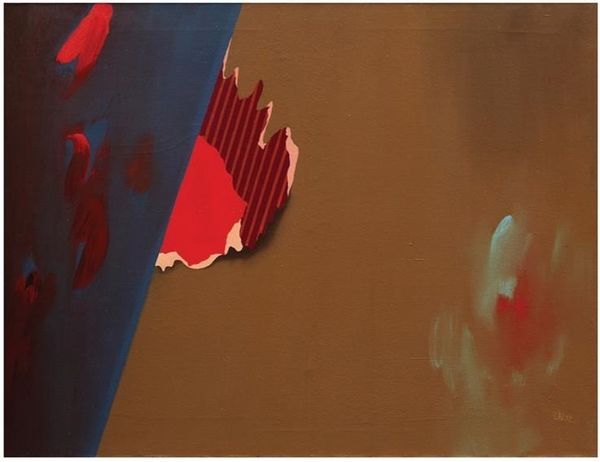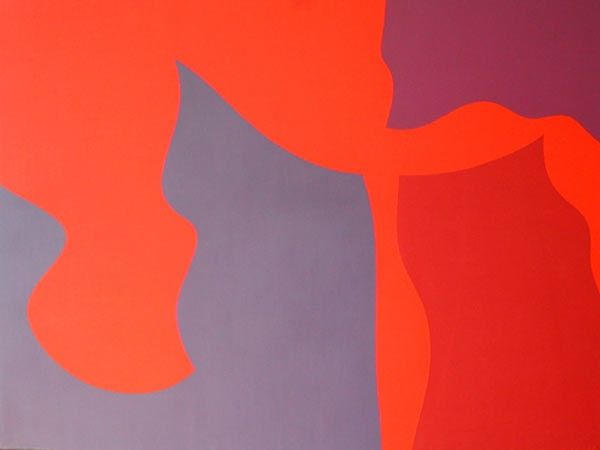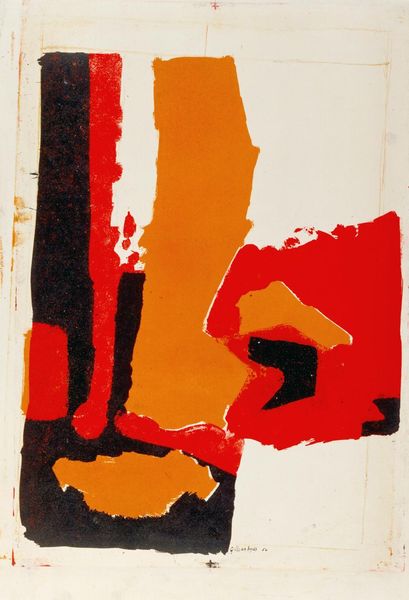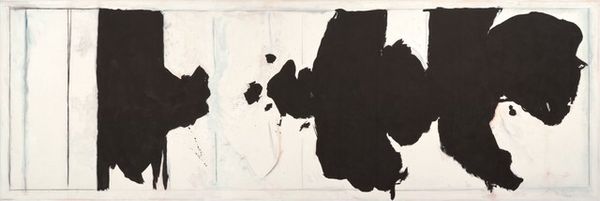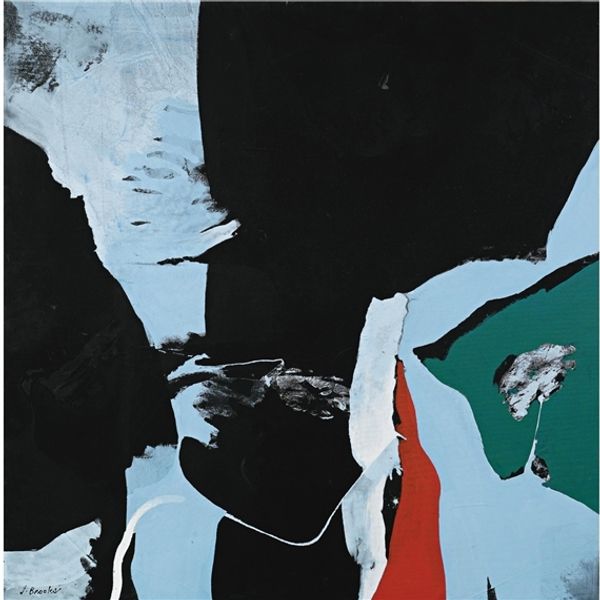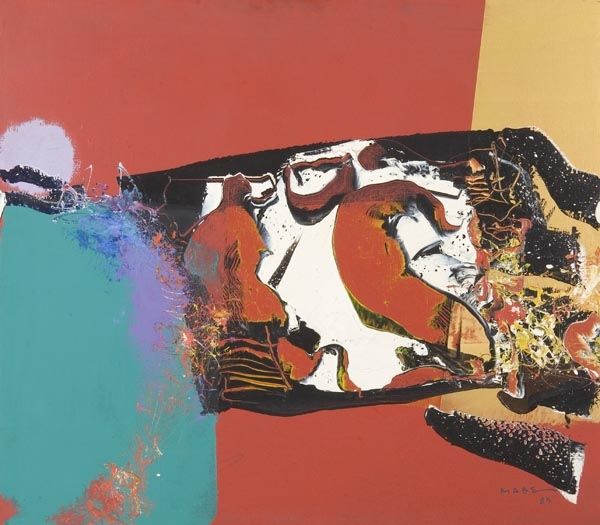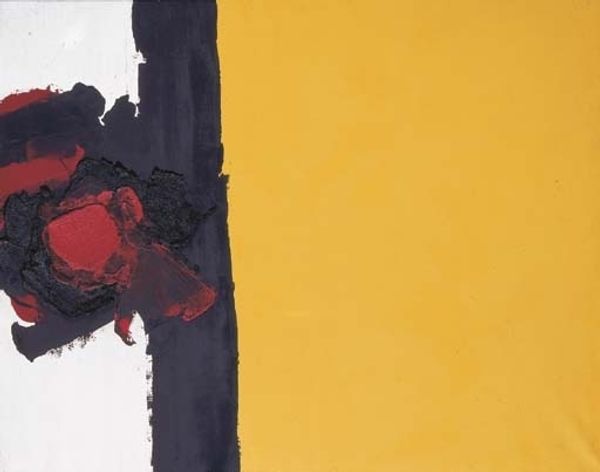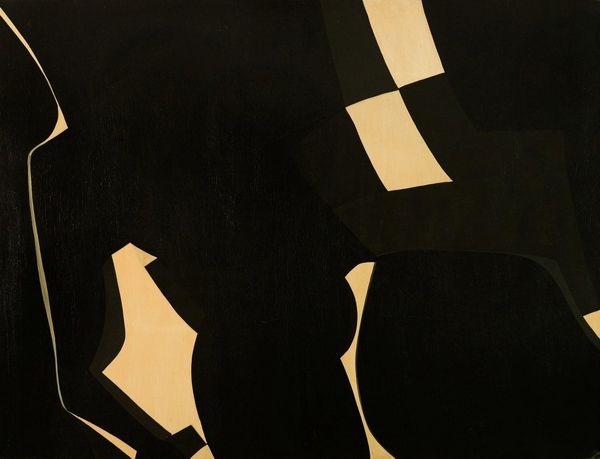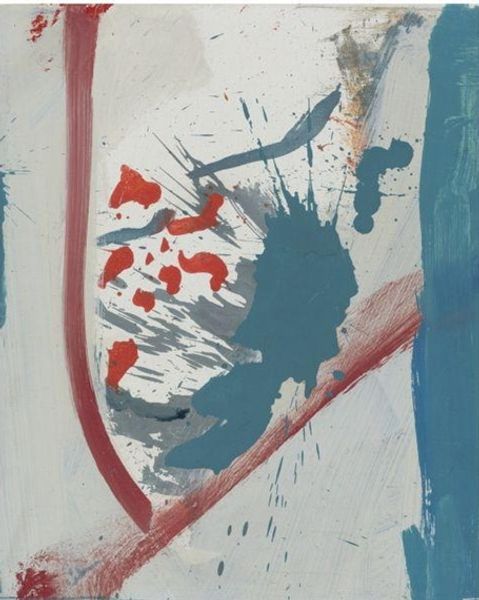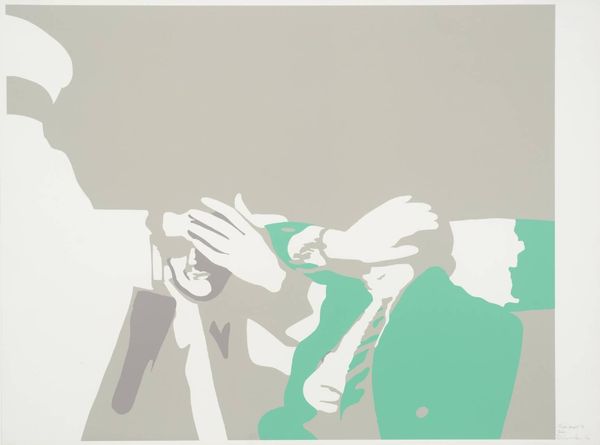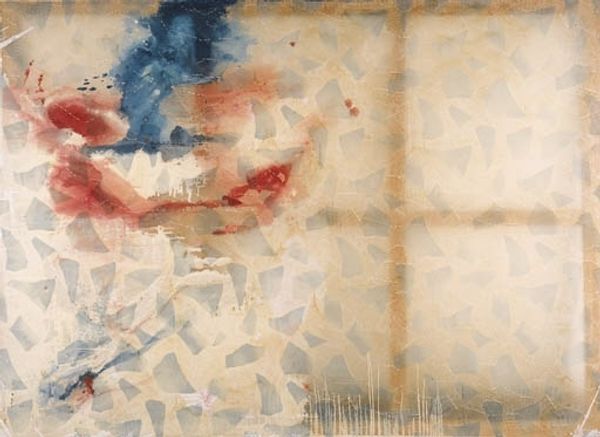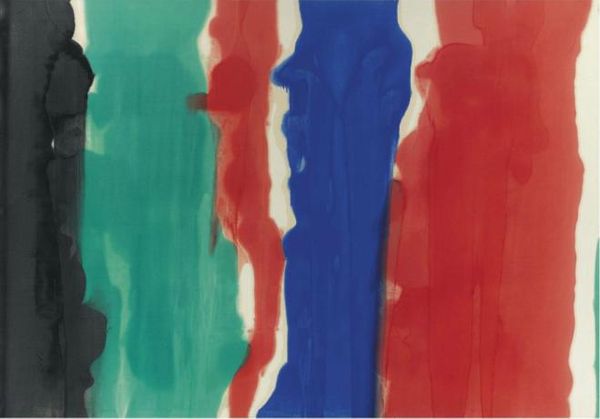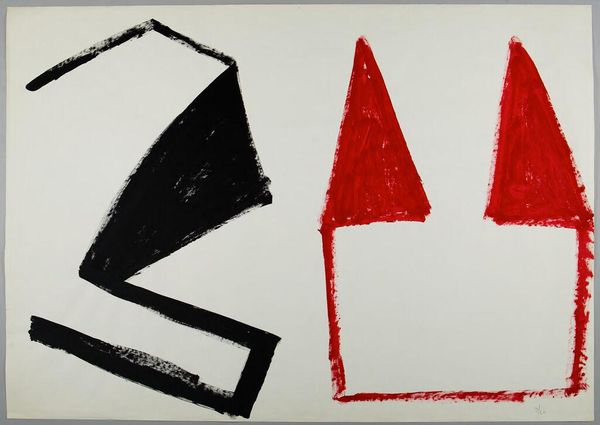
acrylic-paint
#
abstract-expressionism
#
abstract expressionism
#
abstract painting
#
acrylic-paint
#
form
#
oil painting
#
acrylic on canvas
#
geometric-abstraction
#
line
Copyright: Friedel Dzubas,Fair Use
Curator: Looking at "Sounding" by Friedel Dzubas from 1962, the first thing I notice is the sheer boldness of these forms against the white canvas. It's as if someone took a handful of vibrant hues and just tossed them onto the surface. Editor: Yes, it’s tempting to think of it as spontaneous, but situating this work within Abstract Expressionism, particularly Color Field painting, reveals a deliberate exploration of space and color relations. We can't ignore the historical context of this art form that largely challenged academic and patriarchal traditions through pure abstraction. Curator: Absolutely, but still... the intuitive leap is so present. The way that muted teal pushes against that startling red slash is almost visceral. And that golden shape... It feels organic, like some strange, undersea creature floating up. I wonder, what does "Sounding" evoke in you? Editor: "Sounding" makes me think of the exploration of identity. As Abstract Expressionism emerged after World War II, there's often an association of abstraction with freedom and individuality in American art. While color became freed from representational needs, that invites reflections on issues like alienation. Also, the lack of explicit social narrative doesn’t negate that all art carries sociopolitical weight whether or not the artist overtly signals their intentions. Curator: That’s insightful. And something about the expansiveness speaks of that postwar optimism, that yearning for...well, maybe for a sound unheard, a truth unspoken. Does it suggest anything beyond that sociopolitical tension to you? Any human elements that make their presence known? Editor: Certainly. Dzubas, like many Abstract Expressionists, draws us in using pure sensation. It is that interplay of colors that becomes his vocabulary. What interests me are the tensions that surface precisely because these artists abandoned narrative and representational constraints, therefore foregrounding our own projections of the external pressures of social issues such as gender, class, and ethnicity onto these large paintings. Curator: I'll carry that awareness the next time I look at a canvas. This discussion truly gave me some food for thought. Editor: Me too!
Comments
No comments
Be the first to comment and join the conversation on the ultimate creative platform.
